The volunteer state, known for blues music, the Country Music Hall of Fame, Elvis Presley, and Johnny Cash, is also home to a vast array of wildlife. Its 42,000-plus square miles includes some of the most beautiful, forested mountain areas in the country. Tennessee is home to everything, from caves and sinkholes to the Appalachian temperate rainforest and the Cumberland Plateau – each with unique wildlife. We rounded up the state’s six biggest animals, measured by size or weight. Let’s discover the 6 largest animals in Tennessee!
Largest Mammal: Elk (Cervus elaphus manitobensis)
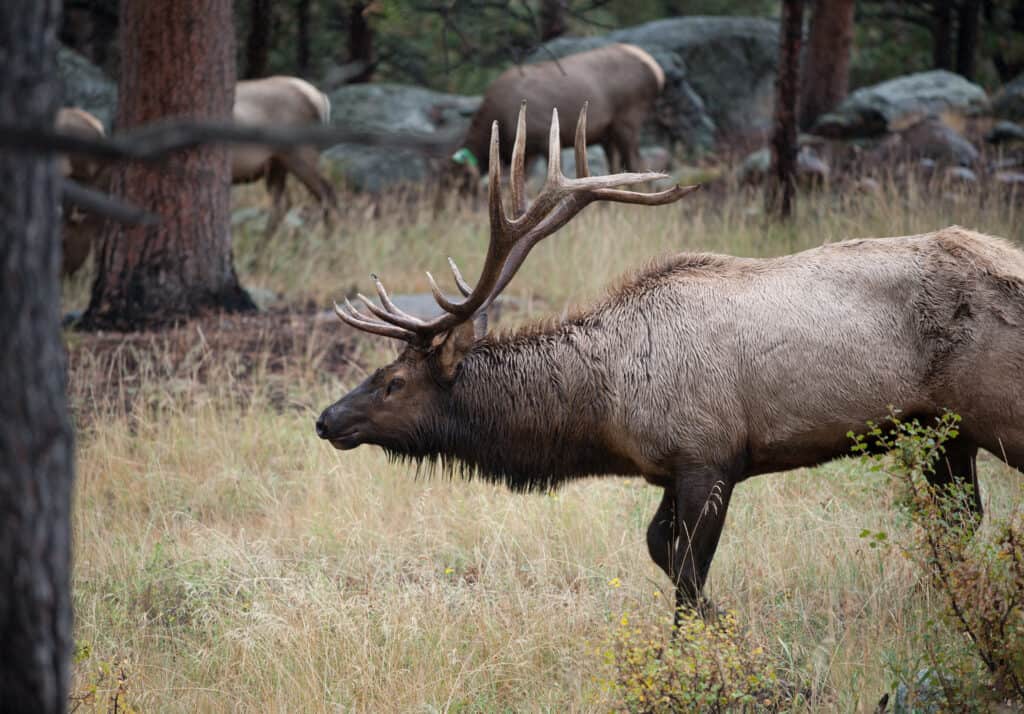
©Tony Campbell/Shutterstock.com
Also known as the wapiti by the Shawnee and Cree tribes, the elk is one of the largest deer species in the world. In North America, it’s only smaller than the moose and bison.
Standing nearly 5 feet tall at the shoulders with a nose-to-tail length of 8 feet, 10 inches in large individuals, the elk is massive. Males can weigh up to 1,000 pounds, while females are smaller at a maximum weight of about 700 pounds.
This huge deer species inhabits forested areas, and near the edges of forests, eating leaves, grasses, plants, and tree bark. Most of the year, males and females separate into different herds; however, during the summer in some parts of their range they form huge groups that reach 400 individuals.
Tennessee is home to a small number of elk, about 400 individuals. The individuals behind Horsebone Ridge in the Royal Blue Wildlife Management Area first introduced them into the state in December of 2000. Since then, experts released them in Montgomery Fork Creek, Hickory Creek, and again in Horsebone Ridge.
Largest Birds: American Bald Eagle (Haliaeetus leucocephalus) and American White Pelican (Pelecanus erythrorhynchos)
Tennessee hosts two birds with the largest wingspans in North America. One is a year-round resident with a breeding population and the other is a ”snow bird” that comes in for the nicer winter weather and better fishing.
American Bald Eagle
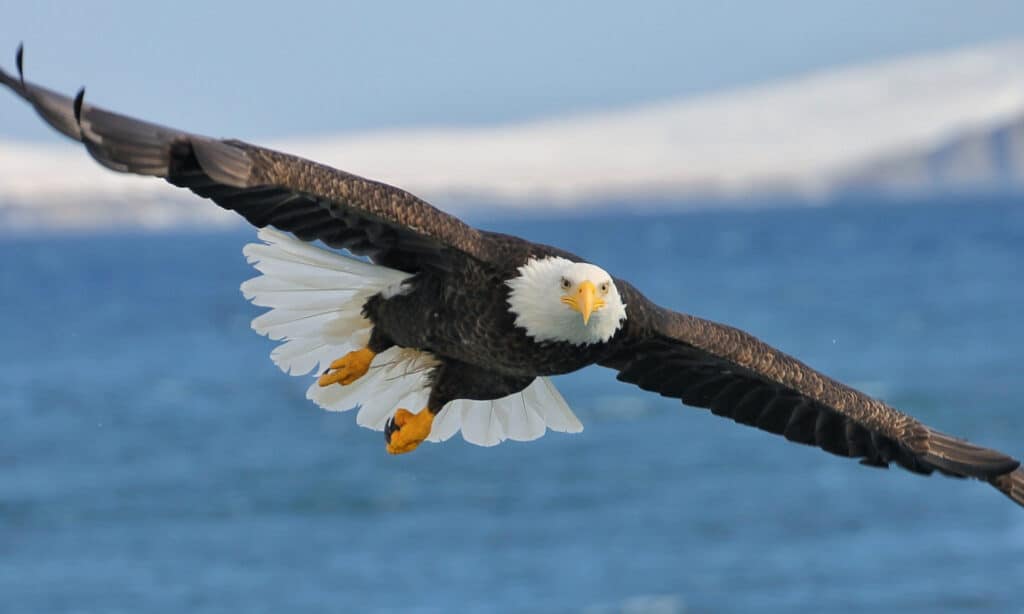
In Tennessee, you’ll see the most bald eagles between January and February, when eagles from further north winter in the state.
©Jack Molan/Shutterstock.com
With a maximum wingspan of nearly 8 feet, the bald eagle is as majestic as they come. These birds are native throughout most of North America, despite their past critical endangerment.
Bald eagles don’t obtain their white head and tail feathers until they’re almost five years old. Until then, juvenile bald eagles are often confused for golden eagles, which look very similar. The easiest way to differentiate between the two is by looking for the golden eagles’ feathered legs.
You’ll see the most bald eagles between January and February, when eagles from further north spend the winter in the state. There are about 175 resident nesting pairs in Tennessee, and they’re most common in forested areas near large bodies of water. Bald eagles prefer fish, but are opportunistic, so wherever there’s food available they can make a home.
American White Pelican
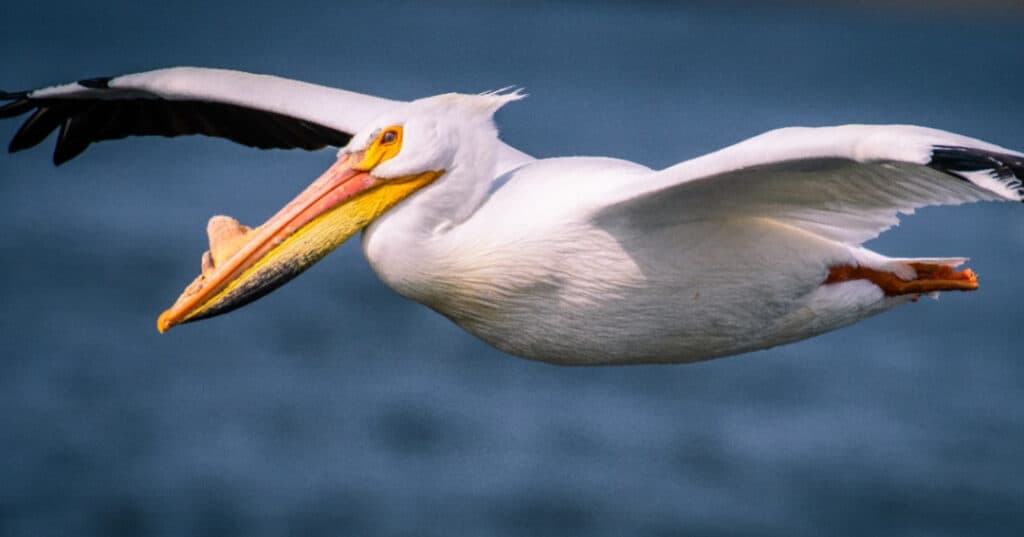
©Jerek Vaughn/Shutterstock.com
While the bald eagle is the largest year-round resident of Tennessee, the American white pelican spends winters in Tennessee. Their population is on the rise, so more of them are arriving for the winter. These birds have the largest wingspan of any bird in Tennessee, and they are the second-largest bird in North America, only surpassed by the California condor.
This species sports all-white feathers except for its flight feathers, which are black; their bill is yellow orange. During breeding season males and females grow a large bump on the top of their bills, which they shed at the end of the season.
American white pelicans are widely distributed across North America, although they’re only part time residents in Tennessee. This massive bird’s wingspan regularly measures 9 feet, but there are some credible reports of birds with 12-foot wingspans.
Largest Fish: Lake Sturgeon (Acipenser fulvescens)

©Fabien Monteil/Shutterstock.com
Three species of sturgeon occur in Tennessee rivers and lakes: The lake sturgeon, shovelnose sturgeon, and pallid sturgeon. Of the three species, the lake sturgeon grows the largest.
In Tennessee, all three species are endangered and deliberately hunting them is illegal. According to the Tennessee Wildlife Resources Agency, while fishing sturgeon is illegal, they encourage reports of sturgeon of any size and include a link to a form for easy reporting.
Conservation efforts have led to an additional 220,000 lake sturgeon in the Cumberland River and upper portion of the Tennessee river since 2000.
This primitive bottom feeder lives an extremely long time and females don’t typically reproduce until they’re at least 15 years old, while the males reach maturity much younger, at about seven years of age. This species can live to be 150 years old, and usually eats insect larvae, mollusks, snails, and crayfish. Lake sturgeon can grow up to 8 feet long and weigh 300 pounds.
Largest Amphibian: Hellbender (Cryptobranchus alleganiensis)

The largest amphibian in Tennessee has a frightening name, and some might say, an even more frightening appearance. This unusual salamander is endemic to the eastern United States around the Appalachian Mountains from southern New York to northern Georgia. In Tennessee, they aren’t as common as they once were and are “In Need of Management.”
Although this huge salamander species is usually gray, it varies from yellowish-brown to black. The hellbender supposedly gets its name from early settlers who thought it looked like something straight out of Hell, to which it was bent to return.
Hellbenders are almost completely aquatic and only rarely leave the water. They have lungs that they only rarely use and absorb oxygen while underwater through their frills.
The hellbender is the largest amphibian in Tennessee, and this 12 to 20-inch animal inhabits the eastern two-thirds of the state in fast-moving rivers and streams with clear water and appropriate cover. They prefer crayfish but will also eat fish, insects, and worms.
Largest Snake: Coachwhip (Masticophis flagellum)
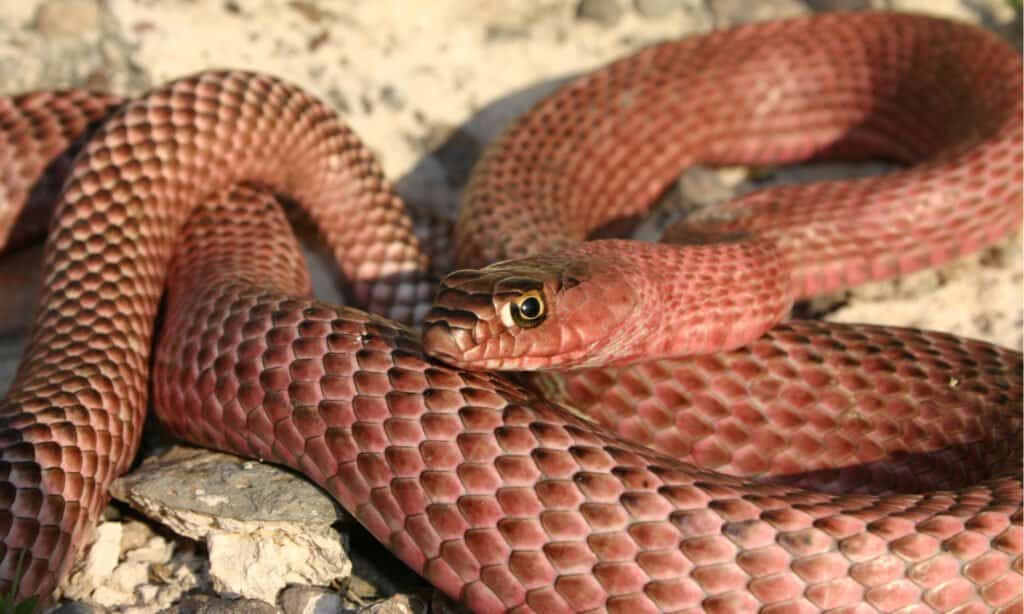
©Nathan A Shepard/Shutterstock.com
This unusually named snake inhabits much of the eastern United States. However, only a small portion of its range extends into southwestern Tennessee. The coachwhip is Tennessee’s longest snake and gets its name from the lines in its body that look like braided whips.
Coachwhips are long colubrid snakes that periscope up to hunt by sight. These fast-moving snakes often startle people with this behavior. They’re diurnal and prefer sandy open habitat that’s easier to race across after prey.
Growing up to 5-feet long, coachwhips have an almost all-black front half, fading to brown with the characteristic “braided whip” appearance of the back half. They’re terrific snakes to have around because not only do they eat rats and mice, but they also eat other snakes like the venomous rattlesnakes present in the region.
Largest Insect: Eastern Hercules Beetle (Dynastes tityus)
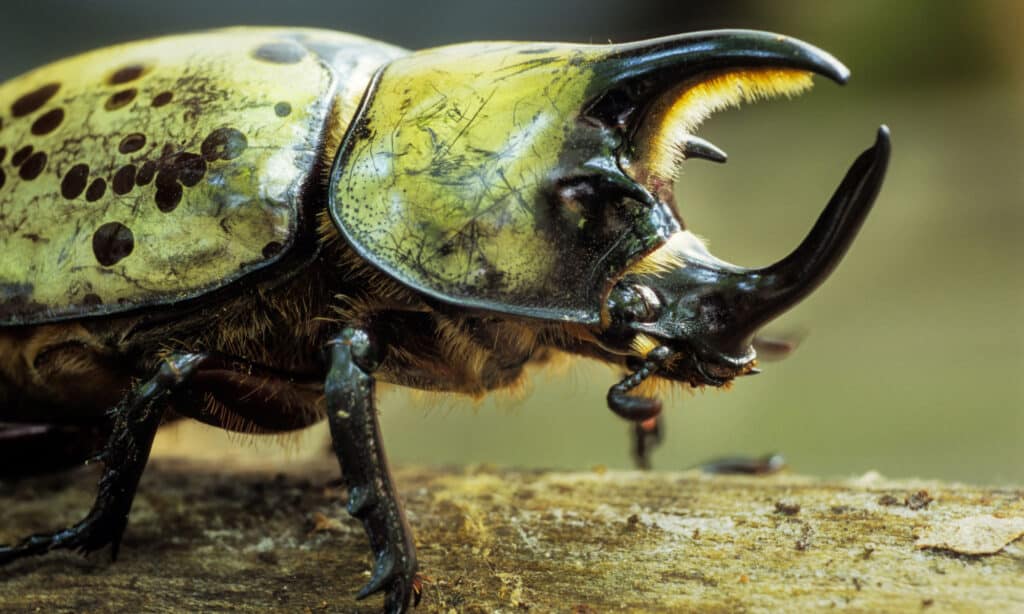
©Gerry Bishop/Shutterstock.com
If you’re looking for a really big insect, the eastern hercules beetle is your guy. This giant species is common in the eastern half of the United States, including Tennessee.
The grubs of this species are large, white-to-off-white and feed on rotten logs, stumps, rotten fruit, and dead leaves. The adults have wide variations in color, but females are usually brownish-black; males have black heads and their bodies can be green, brown, or black.
Eastern hercules beetles are huge, and the males grow up to 7 inches long. The males’ horns are typically one-third of their body length, and on a few individuals, they can be longer than the rest of the body. However, they’re harmless; these beetles aren’t aggressive and actually help clear out dead and rotting plant material.
Next Up
- 10 largest beetles in the world
- Eagle size comparison and Wingspan
- 10 Incredible Elk Facts
- Discover 2 types of rattlesnakes in Tennessee
The post Discover the 6 Largest Animals in Tennessee and Where You’ll Find Them appeared first on AZ Animals.
from Animal News, Facts, Rankings, and More! - AZ Animals https://ift.tt/Lye6uho